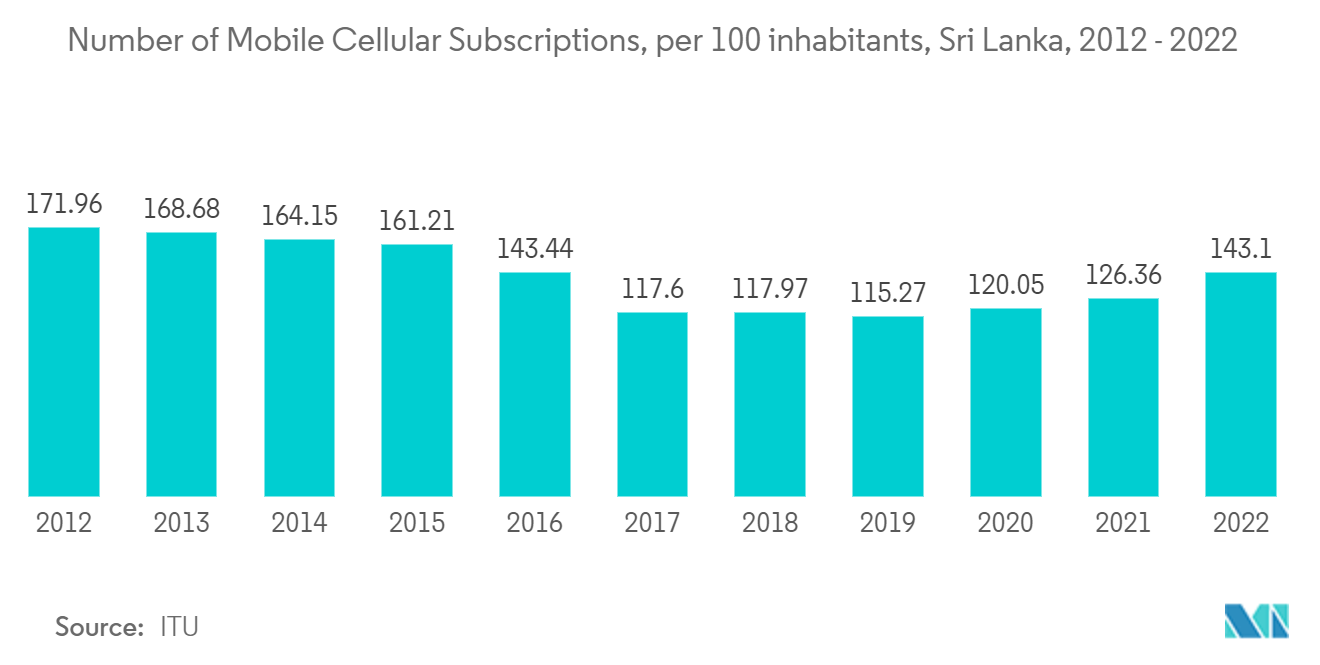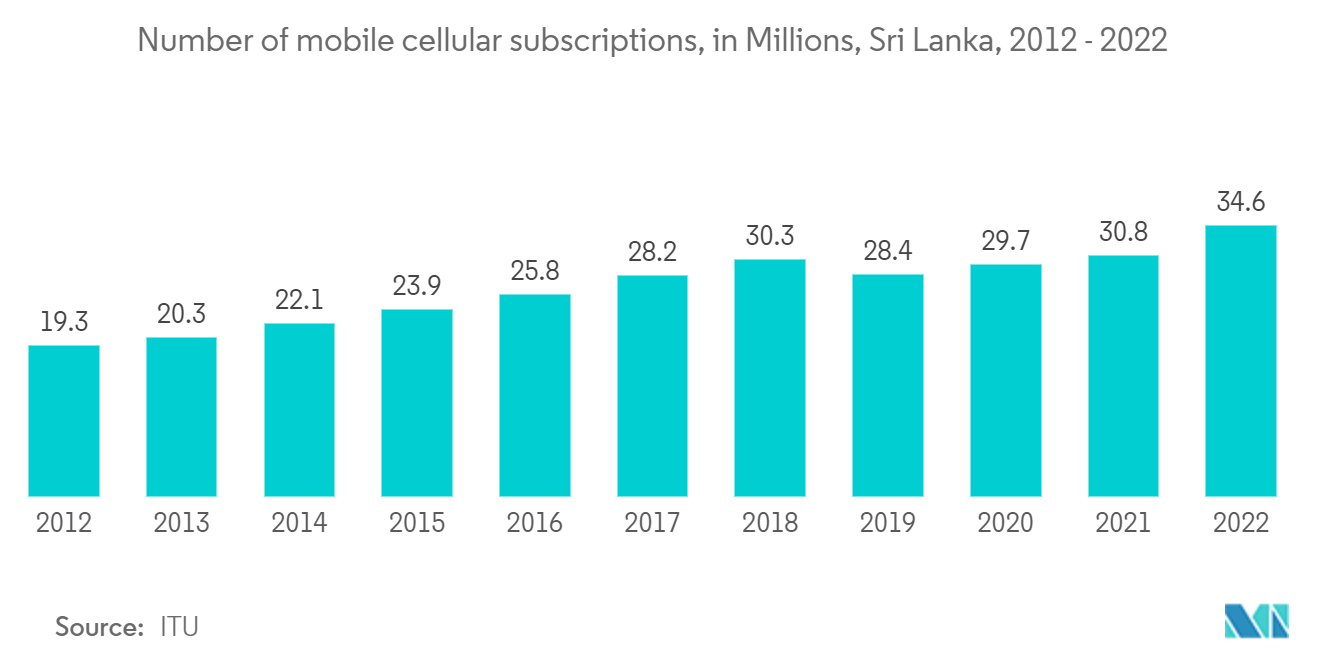Market Trends of Sri Lanka Telecom Tower Industry
Rising demand for 5G to Drive the Market
- Sri Lanka's rollout of 5G networks is set to drive a significant uptick in demand for new telecom tower installations. Unlike 4G, 5G technology operates at a higher frequency and has a shorter range, necessitating a denser network of towers. As a result, both macro and small cell towers will see a surge in construction across urban and rural locales, ensuring comprehensive 5G coverage.
- For instance, in October 2023 - In Sri Lanka, Dialog Axiata conducted the inaugural trial of the Voice over New Radio (VoNR) service on a 5G Standalone network. This achievement not only highlights Sri Lanka's first foray into Voice over 5G but also underscores the pivotal role of Huawei, which supplied the project's infrastructure.
- Upgrading existing telecom towers in Sri Lanka to accommodate 5G technology is imperative. These upgrades demand new equipment that supports higher data speeds and reduced latency. Such modernization of the current infrastructure will require substantial investments, propelling growth in the telecom tower market as operators aim to bolster their networks.
- The Sri Lankan government is poised to be instrumental in the seamless rollout of 5G networks. By implementing policies that alleviate regulatory hurdles, offer incentives for infrastructure investments, and foster public-private collaborations, the government aims to accelerate the growth of the telecom tower market. Furthermore, government support will be pivotal in addressing challenges such as land acquisition and environmental issues.
- Sri Lanka is witnessing a swift rise in mobile phone penetration. With mobile phones becoming more affordable and accessible, even the rural populace is gaining access, driving up the demand for telecommunication services. This surge in demand is poised to bolster the Sri Lankan Telecom Tower Market. Data from the International Telecommunication Union (ITU) highlights this trend: mobile cellular subscriptions per 100 inhabitants in Sri Lanka surged from about six in 2000 to nearly 180 by 2011. Post-2012, the numbers have seen fluctuations, wrapping up at around 143.1 in 2022.

Operator-Owned Towers to hold a Major Share
- In Sri Lanka, telecom companies exercise full control over their network infrastructure by owning their towers. This control is vital for optimizing network performance, especially in a competitive landscape where service quality stands out as a key differentiator. By owning the towers, operators can customize their infrastructure investments to address specific coverage and capacity needs, eliminating the dependence on third-party tower companies.
- As Sri Lanka gears up for 5G deployment, telecom operators are poised to make significant investments in expanding their tower networks. Tower ownership provides operators the agility to strategically position new sites and upgrade current ones, aligning with 5G's technical demands. Such investments empower operators to cater to the surging demand for data services and deliver enhanced connectivity.
- For instance, as of May 2024 - Sri Lanka's government has unveiled plans to permit third-party companies to construct telecom towers. These changes are on the horizon as the nation seeks to amend its Telecommunications Regulatory Commission Act (TRCSL) for the first time in nearly three decades. The proposed amendment aims to transition the telecom site construction market in Sri Lanka from its traditional model—jointly managed and funded by Mobile Network Operators (MNOs) and the government—to one dominated by independent tower companies (towercos). If the proposal is ratified, it stands to significantly enhance the attractiveness of Sri Lanka's tower market, especially given that operators currently lack the resources for last-mile 4G and 5G rollouts.
- To streamline costs and accelerate network expansion, operators with tower ownership are turning to infrastructure sharing agreements. This approach is gaining traction in Sri Lanka, with operators seeking cost-effective methods to broaden their coverage. These operator-owned towers not only underpin these collaborative efforts but also solidify their stronghold in the telecom tower market.
- According to the International Telecommunication Union (ITU), Sri Lanka witnessed a rapid rise in mobile cellular subscriptions during the early 2000s, soaring from about 0.43 million in 2000 to over 17 million by 2010. This upward trajectory persisted post-2011, culminating at roughly 34.6 million in 2022. Such consistent growth in mobile subscriptions underscores a positive outlook for internet and telecommunication services in the region, subsequently propelling the growth of the Telecom Tower Market.


